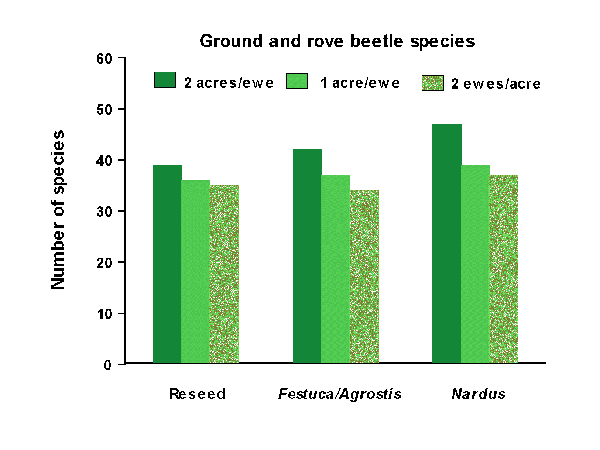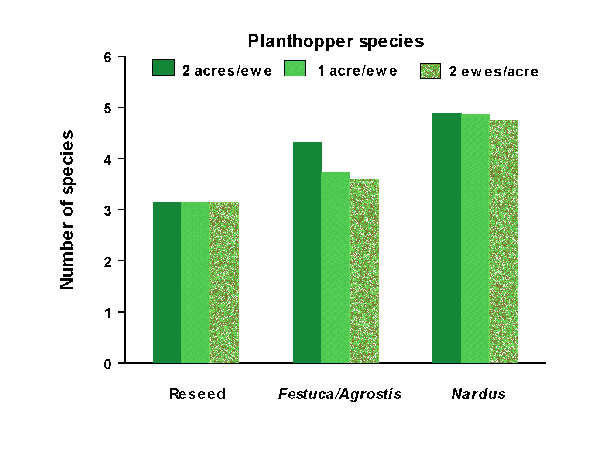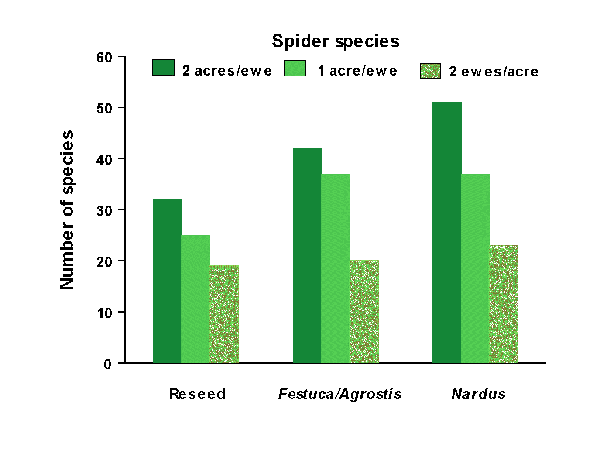 This page has been mothballed.
This page has been mothballed.
It is no longer being updated but we've left it here for reference.
Foot and Mouth Research
HillPlan
 HillPlan, a farm-level decision support tool being developed at MLURI, is capable of forecasting changes in pasture composition and structure under different stocking densities of sheep and/or cattle.
HillPlan, a farm-level decision support tool being developed at MLURI, is capable of forecasting changes in pasture composition and structure under different stocking densities of sheep and/or cattle.
A "typical" grassy Borders hill unit consisting of 60% Matt Grass Rough pasture (predominantly Nardus), 35% Bent/Fescue pasture (Festuca/Agrostis) and 5% reseed was used as an example. An "average", year-round stocking rate of 1 acre per ewe was compared with a reduced stocking rate of 2 acres per ewe and an increased stocking rate of 2 ewes per acre.
 HillPlan forecast that, over a 10-year period, the botanical composition of the hill unit would not change under the "average" or the lowest stocking rate, However, the lowest stocking rate would result in a much greater proportion of tussock and less closely-grazed "lawn" in the Bent/Fescue pasture, in the Matt Grass Rough pasture and in the reseed, resulting from the lower grazing pressure.
HillPlan forecast that, over a 10-year period, the botanical composition of the hill unit would not change under the "average" or the lowest stocking rate, However, the lowest stocking rate would result in a much greater proportion of tussock and less closely-grazed "lawn" in the Bent/Fescue pasture, in the Matt Grass Rough pasture and in the reseed, resulting from the lower grazing pressure.
HillPlan forecast that, after 10 years under the greater grazing pressure of the highest stocking rate, the Bent/Fescue pasture would spread into the area of Matt Grass Rough pasture and there would be a much higher proportion of closely-grazed "lawn" areas with much less tussock in all three pasture types.
 The consequences for the numbers of species in three classes of arthropods under these different pasture structures are shown in the figures below. Lower stocking rates generally result in greater structural diversity and greater numbers of all three classes of arthropods in each of the different pasture types.
The consequences for the numbers of species in three classes of arthropods under these different pasture structures are shown in the figures below. Lower stocking rates generally result in greater structural diversity and greater numbers of all three classes of arthropods in each of the different pasture types.
The arthropods form part of a complex food web and will contribute to a generally higher level of biodiversity despite the fact that there will be little change in the botanical composition of these grassy hills.

